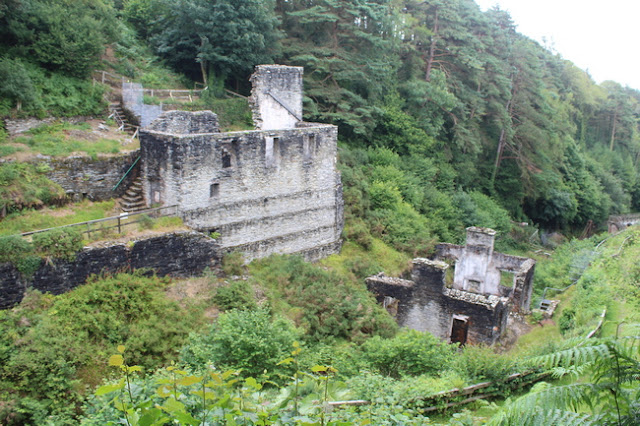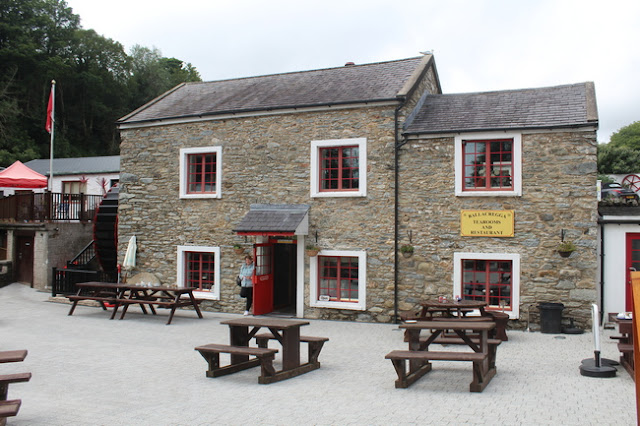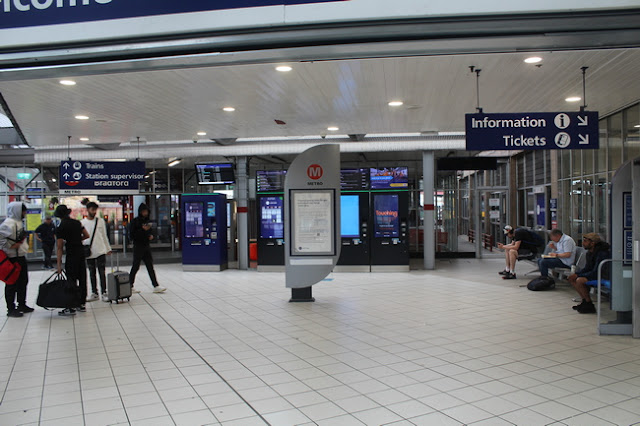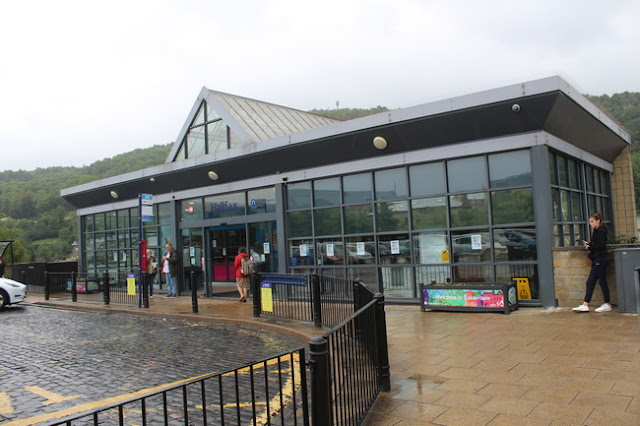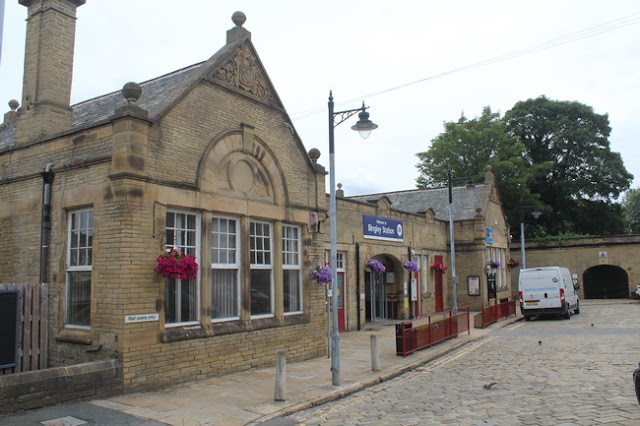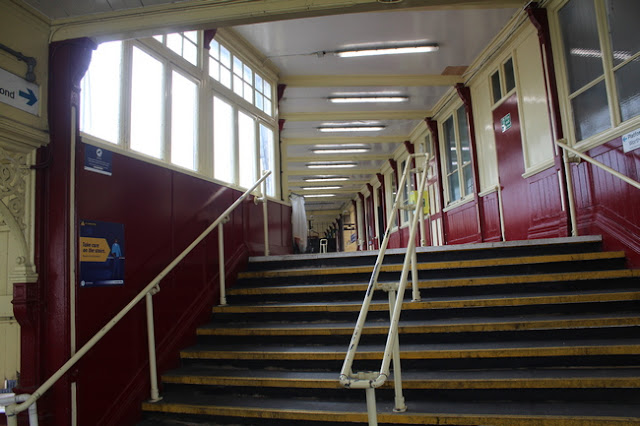A visit to each staffed station in West Yorkshire by train.
Having spent a lot of time walking old railways I have visited several that have closed since the days of the Beeching cuts of the 1960s and have often thought how it cannot be taken for granted that in years to come people will not be looking for remnants of lines that are still in use today. With the railways of the UK coming increasingly under state control cut backs look more likely, the recent announcement that most ticket offices are facing closure highlighting this. I decided to spend a day visiting all the staffed stations in West Yorkshire. In the end I was a couple of short that I subsequently visited one afternoon later that week.
There are countless stations in the region that have previously lost ticket offices. Generally once the staff presence is removed other facilities such as toilets and waiting rooms are closed, historic station buildings become derelict and eventually we get left with a couple of platforms and a waiting shelter more at home on a bus stop.
Below - The railways of West Yorkshire are covered by the West Yorkshire Passenger Transport Executive (or whatever it is called at the minute) and are marketed under the Metro brand.
Leeds
The capital of the West Yorkshire county and centre of the local rail network. While it is not planned for Leeds to loose its staff the plans are for cuts that sound like they would just leave staff to help people use self service machines like in many supermarkets these days.
Below - The ticket office at Leeds, already dominated by self service machines on the right with the ticket windows currently threatened with closure on the left.
Below - The grand North Concourse built in the 1930s. Originally the platforms of Wellington station were accessed on the left.
Cross Gates
Dating back to 1834 and the Leeds and Selby Railway. The current station dates back to 1902 when the lines through the station were upgraded from two to four tracks. The centre through lines have since been removed as well as the buildings and canopies on platform level and a footbridge between platforms.
Below - The station building at road level.
Below - Showing how stations can be a local hub, a couple of delivery machines have been installed.
Below - A Cross Country HST heading towards Leeds. Between the tracks were once the through lines.
The level part of the ramp seen on the left is the site of the footbridge between the platforms.
Garforth
Also dating back to the Leeds and Selby Railway in 1834, the current version of the station dates back to 1872.
Below - The ticket office at Garforth.
Below - The glass canopy on the Leeds bound platform offering some covered seating. The footbridge has since been removed to allow for electrification of the route (if it finally goes ahead this time).
Below - The station building at Garforth.
Wakefield Westgate
The current station entrance was built in 2013. The station also features buildings from earlier phases from 1867 and 1967. Nothing remains of an early station nearby built in 1856.
Below - The ticket office in the background.
Below - The station entrance and taxi rank.
Dewsbury
The former London & North Western Railway station dating back to 1848. The last survivor of four stations in the town along with the Great Northern's Central station and the Manchester & Leeds Railway's Market Place and Thornhill stations.
Below - The entrance to Dewsbury station.

Below - The ticket office on the right and entrance to the platforms. The closure notice for the ticket offices can be seen on the right, days in to the "public consultation" on the plans.
Huddersfield
Opened in 1847 as a joint station by the London & North Western Railway and Lancashire & Yorkshire Railway. The station has a grand facade at the entrance which is grade 1 listed. The station is the second busiest in West Yorkshire after Leeds.
Below - The ticket office.
New Pudsey
New Pudsey station opened in 1967 on the edge of Pudsey replacing a branch through the town that closed a few years previously. It also replaced Stanningley station a short distance to the east which closed the following year. It was designed as a "Parkway" station easily accessible off the road network and with ample parking for those driving from the previously mentioned communities and nearby Farsley. Originally it was served by London trains that avoided Leeds using the since closed Wortley Chord.

Bradford Interchange
The current four platform station opened in 1973 and replacing the huge 10 platform Bradford Exchange with its large iron and glass roof that stood on the other side of Bridge Street. With a well connected bus station alongside since 1977 the Interchange name replaced the Exchange name in 1983. I visited remnants of the old Exchange station on my walk of
Rails Around Bradford
Below - Entrance to the railway station at Bradford Interchange up the escalator from the connection to the bus station and entrance from Bridge Street.
Below - The train ticket office. The interchange also has a bus and coach information desk on the lower level.
Halifax
The first station opened here in 1844 served by a branch off the Manchester & Leeds line (via Brighouse and Normanton to Hunslet Lane station in Leeds). In 1850 this line was extended to Bradford and temporary wooden buildings were used for this new through station until grand permanent buildings were completed in 1855. The addition of the Great Northern lines put these buildings on an island platform between the Lancashire & Yorkshire (successor to the M&L) and GNR routes with access provided off a bridge over the GNR lines.
Below - The entrance to Halifax station.
Below - The 1855 building. The grass covered area would originally have been the approach to the station until the GNR lines were added in front of the station building. This building is now part of the Eureka attraction built in part of the former goods yards.
Below - The current station entrance off the bridge over the since removed GNR lines, the ticket office is on the left.
Hebden Bridge
The station dates back to 1840 and the Manchester & Leeds Railway. The current station dates from 1893 when the station was rebuilt. With old style signage retained the station looks like it could be on a heritage railway rather than the modern network, displays on local railway history on the Manchester / Blackpool bound platform add to this effect.
Below - The ticket office.
Below - Looking across to the well kept Leeds bound platform with its heritage signage and flower displays. The lift shafts are modern (though the station had earlier lifts going back to Edwardian times) but have been designed to fit in with the character of the station.
Below - Railway history displays in one of the waiting rooms.
Todmorden
Dating from 1841 and the Manchester & Leeds Railway. The ticket office was at ground floor level with the platforms at first floor level, the ticket office is currently located on the Manchester bound platform.
Below - The station building from street level.
Below - The Manchester bound platform, the ramp on the right accesses the ticket offices.
Below - The subway between platforms. A taxi office on the left occupies the earlier ticket office site.
Below - The buildings on the Manchester bound platform and entrance to the subway.
Bradford Forster Square
Like Bradford Interchange station Bradford Forster Square is also the result of replacing the original station with a smaller modern one slightly further out of the town. The original station was built in 1846 by the Leeds & Bradford Railway, later part of the Midland Railway. It was rebuilt in 1890 and its overall roof was replaced with canopies in 1953. The current station was built alongside the approach to the old one in the 1980s while only one of the original six platforms saw regular use. The new station opened in 1990. I visited remnants of the old station on my walk of
Rails Around Bradford
Below - Entrance from the taxi rank. On the left the lift tower up to Manor Road can be seen, in the original 1990 layout the ticket office was located in the lift tower but a later building was added at ground level.

Below - Approach to the platforms from the lift and a ramp from Cheapside. The odd arrangement of canopies being a result of moving the ticket office from its original location in the lift tower.

Shipley
Originally dating back to 1847 and the Leeds and Bradford Railway. The current station dates back to 1883. Originally platforms just served the lines in and out of Bradford until a platform was added on the north side of the triangular junction in 1979, this still required services heading east to cross over to use until another platform was added for Skipton to Leeds trains in 1992.
Below - The grand booking hall.
Below - The station entrance
Bingley
Again dating to 1847 and the Leeds and Bradford Railway, the current station dates back to 1892 and is grade 2 listed.
Below - The main station entrance.
Below - The Midland Railway's insignia and Wyvern logo.
Keighley
Another Leeds and Bradford Railway station dating back to 1847, though the original station was situated north of the current one which was opened in 1885 when the bridge from which it is accessed replaced a level crossing. The station is on the junction with the Worth Valley line, now the Keighley and Worth Valley Railway.
Below - The station entrance from the road bridge.
Below - The booking hall situated between the ramps to the Leeds and Skipton bound platforms.
Below - The corridor between the platform ramps.
Guiseley
Dating back to the Midland Railway in 1865, the current station buildings were constructed in 2002.
Below - The main station building with the ticket office.
Menston
Also dating back to 1865 and the Midland Railway, though Menston retains its original buildings. The line was nearly closed under Beeching and Menston was for many years unstaffed until the buildings were returned to railway use in 2000. The route is now a busy electrified commuter route.
Ilkley
The station opened in 1865 under the Otley & Ilkley Joint Railway, a collaboration between the Midland Railway and the North Eastern Railway whose line from Otley and connection to the Harrogate line came in between Menston & Burley in Wharfdale. The former NER route closed as part of the Beeching cuts, I walked part of it from Burley in Wharfdale to Otley.
The station had four platforms with two through platforms and lines heading through the back wall of the station, across the town centre and on to Skipton. That route was also closed but is now run by the Embassy and Bolton Abbey Steam Railway between those two stations. The former through platforms are filled in and used for car parking, the canopies over the car park show where the platforms once were.
In recent years a new ticket office was built on platform 1, allowing more of the station buildings to be repurposed for retail use.
Below - The new ticket office on the platform to the right.
Horsforth
The station dates back to 1849 and was situated on the North Eastern Railway's Leeds to Harrogate line. The station buildings were demolished after the station became unstaffed in 1969. Facilities were restored in 2003 with a new ticket office on the Leeds bound platform and waiting rooms on both platforms.
Below - A Leeds train calls at Horsforth. On the left the old goods shed can be seen, now a DIY store.
I hope to have similar journeys to look at existing stations in other areas over the coming months.































